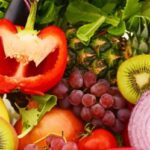
This time, I would like to summarize the trends in nutrition and health labeling in the US, Australia, South Korea, and the UK.
The US: Front-of-Pack Nutrition Labeling
On December 14, 2023, a press release was made by the members of the US Senate and House of Representatives regarding a bill toward mandatory front-of-pack nutrition labeling.
The main requirements of the full text of the bill (PDF) are (i) appear in a consistent location on the principal display panels across products; (ii) have a prominent design that visually contrasts with existing packaging design; and (iii) be sufficiently large to be easily legible. A recent survey shows front-of-package nutrition labeling has broad support from the US consumers, with 75 percent of respondents in favor of a mandatory front-of-package nutrition labeling policy. Understanding the consumer needs will be beneficial for preparing food exports to the US. Speaking of which, we took note that on November 2, 2023, the Japanese government started considering the introduction of FOPNL.
Australia: Voluntary labeling for added sugars
Meanwhile, on November 14, 2023, the Food Standards Authority of Australia and New Zealand (FSANZ) announced that it had approved a revised standard for the voluntary labeling for added sugars. The draft revised standard will not permit ‘no added sugar(s)’ claims when a food:
- contains, or is, an ‘added sugar’ as defined in the Code
- does not contain ‘added sugar’ but contains more sugars (i.e. monosaccharides and disaccharides) than:
10.0 g /100 g for solid food
7.5 g /100 mL for liquid food.
In Japan, there are no labeling standards for added sugars, but there are standards on labeling claims that no sugars are added such as “No sugars used”
(For your reference, the following requirements must be met in order to indicate the statement that no sugars are added:
- No sugars are added,
- No alternative ingredients of sugars or additives are used,
- The sugars content of the food does not exceed the amount contained in the ingredients and additives,
- The sugars content is indicated.
)
South Korea: Labeling of “sugar-free” and “contains sweetener”
On December 28, 2023, the Korea Food and Drug Safety Administration (MFDS) published a draft revision of the Food Labeling Standards. The standard for nutritional content in the proposed revision states that in case the claims “sugar-free”, “unsweetened” or similar are used on the label for products containing sweetener(s), information on calories and indication that “sweetener(s) are used” shall be displayed. (Other proposals such as “calories for alcoholic beverages shall be displayed in larger and bolder letters to improve visibility”
are included)
In Japan, on the contrary, there are no labeling standards regarding the use of sweeteners. However, note that the “No Sweeteners Added” indication is subject to Guidelines for use of “No Food Additive Used” labeling of food additives on food labels.
The UK: Restriction on advertisements for “less healthy” food and drink products
On December 13, 2023, self-regulatory organizations related to advertisements, ASA and CAP announced that, in line with the UK government policies, they will start regulating advertisements for unhealthy products from October 2025. They will prohibit ads for identifiable less healthy products (a subset of products classified as high fat, salt or sugar (“HFSS”)) from being included in Ofcom-regulated TV services and ODPS between 5:30 am and 9:00 pm, and from being placed in paid-for space in online media at any time. There are no similar regulations in Japan, but voluntary standards are in place for the advertisements of liquors.
—
As you can see, there are various trends in each country, but the background of any revision is often described in the materials of its draft revision bill. I think it is important to know the interests of your target country when you consider importing or exporting foods, so it will likely be insightful to read them through.
Share/Like/Follow:
Newsletter Signup
We issue monthly e-newsletters, which provide you with the latest updates on food labeling/regulations in Japan.
If you want to make sure to not miss any issue, please click below.
Related Service
Research Services on Ingredients & Food Labeling -For the Japanese Market-
We verify the conformity of ingredients and additives with the standards for use in Japan based on specifications such as formulation lists. We also verify the conformity of the proposed labeling of ingredient names, nutrients, etc. with the labeling standards based on specifications such as formulation lists.

Label bank Co., Ltd. CEO (Founder)
Born in Japan. Working on solving various issues related to food labeling operations. Also regularly gives lectures for various organizations in Japan.
Co-author of ‘Latest edition: Guide book Food Labeling Law and related business practical points – from scratch (Japanese version only)’ (DAI-ICHI HOKI CO., LTD/2019).






